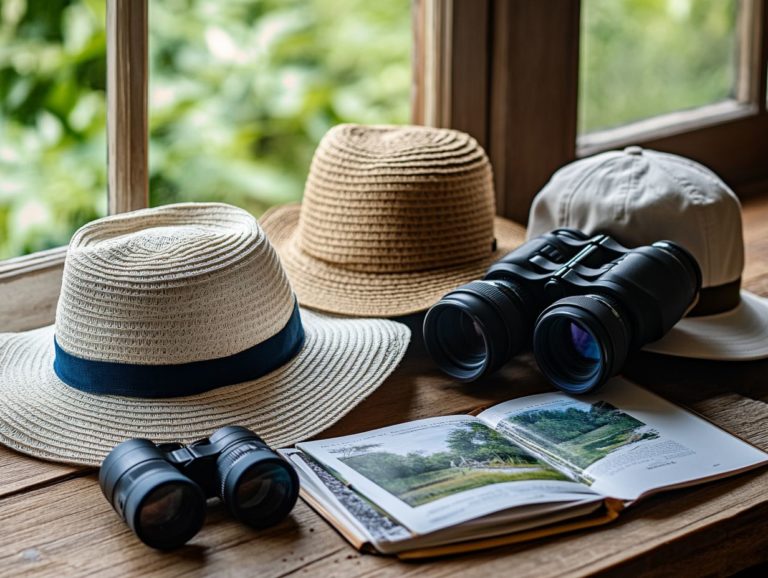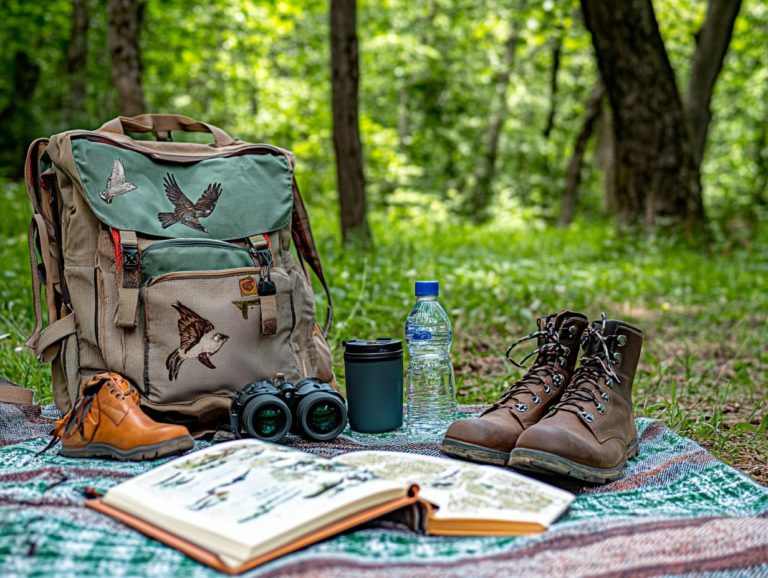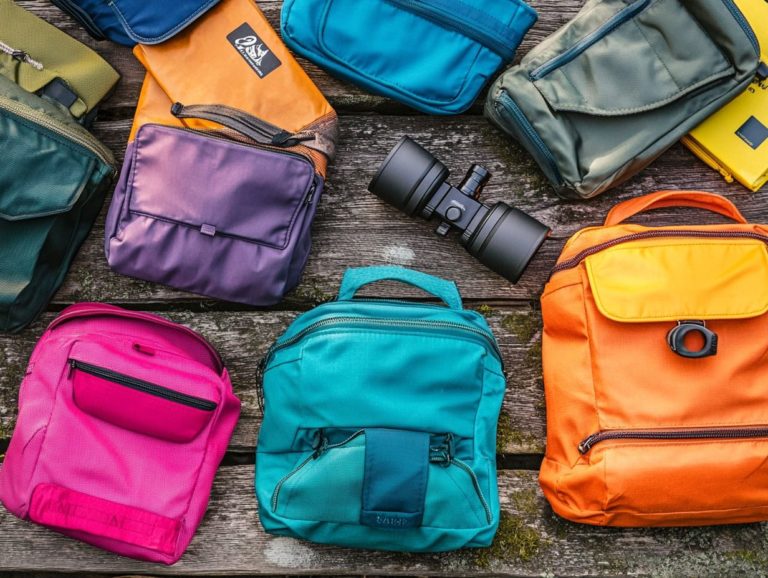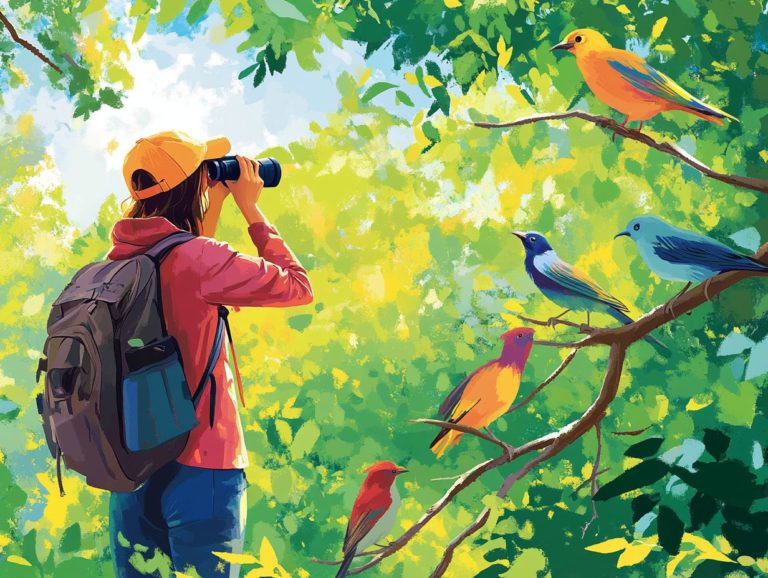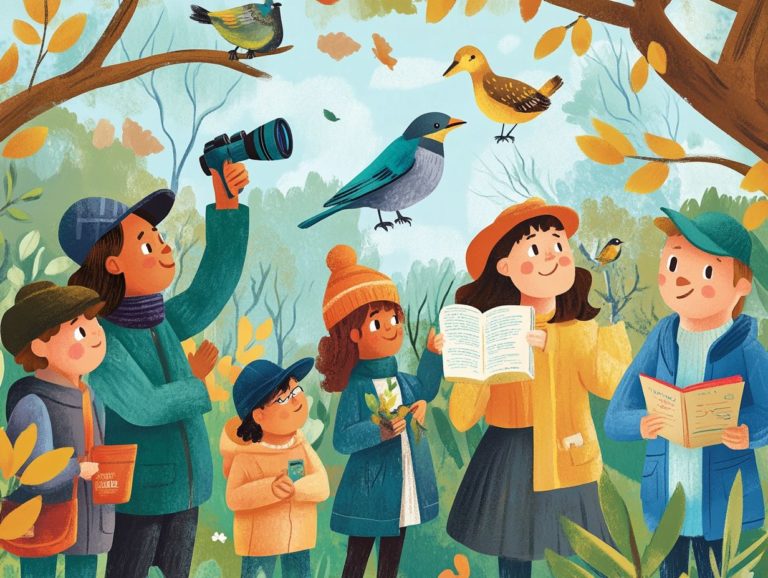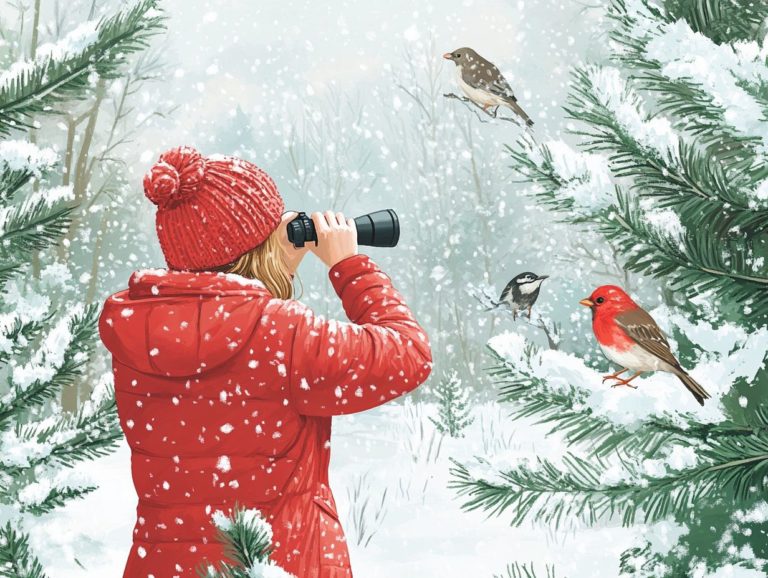How to Pack for a Bird Watching Trip
Get ready to dive into the enchanting world of bird watching! Explore the vibrant birds in stunning spots like Ontario and Long Point.
Whether you re a seasoned enthusiast or just starting, the right gear is crucial. From choosing binoculars to packing comfortable clothing, every detail counts.
This guide covers essential equipment, preparation tips for various environments, and clever packing advice to enhance your birding adventures.
Prepare yourself to embark on a rewarding bird watching journey. Explore magical places like Lake Erie or Tommy Thompson Park!
Contents
- Key Takeaways:
- Essential Gear for Bird Watching
- Choosing the Right Clothing
- Preparing for Different Environments
- Organizing Your Gear
- Additional Tips for a Successful Trip
- Frequently Asked Questions
- What essentials do I need to pack for a bird watching trip?
- Do I need to pack specific clothing for a bird watching trip?
- How should I pack my binoculars for a bird watching trip?
- Should I bring snacks on a bird watching trip?
- Do I need to pack a first aid kit for a bird watching trip?
- What can I pack to attract birds during a trip?
Key Takeaways:
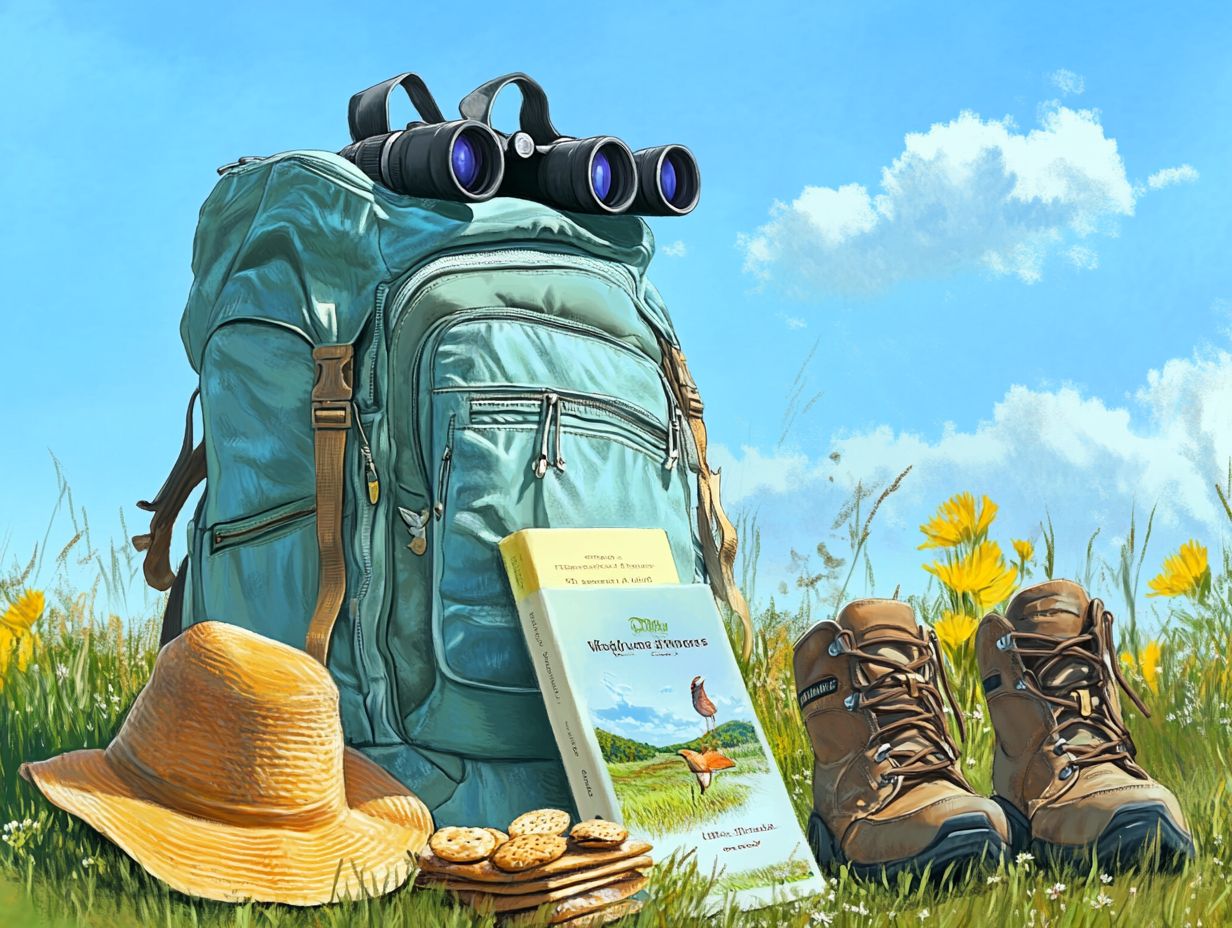
- Invest in quality gear like binoculars and a camera for a successful trip.
- Pack comfortable and functional clothing for a pleasant outdoor experience.
- Research your destinations, such as eBird hotspots, to know what gear to bring and follow safety guidelines.
Essential Gear for Bird Watching
When you go on a birding trip, having the right gear, including the proper backpack, can significantly enhance your experience. For tips on selecting the right one, check out how to pick the perfect bird watching backpack. You’ll be able to observe and document various birds with greater ease.
Consider including a weatherproof notebook for jotting down your observations. A portable power bank keeps your devices charged, giving you uninterrupted access to important apps.
Binoculars, Camera, and Other Must-Haves
The right binoculars and camera gear are essential for a great bird-watching experience. They allow you to observe birds in their natural habitat and capture stunning images.
For binoculars, consider the 8×42 or 10×42 models from Nikon or Vortex. Their clarity and lightweight design make them ideal for long hours in the field.
If you want to enhance your birding experience with photography, lenses like the Nikon AF-P 70-300mm are invaluable. Using fast shutter speeds and wide apertures helps capture even the briefest moments beautifully.
Choosing the Right Clothing
Selecting the perfect attire for bird watching is vital for comfort and functionality. This is especially true in varied environments like Ontario’s Long Point.
Quick-dry clothing keeps you comfortable with changing weather, while waterproof gear protects against sudden rain showers.
Invest in high-quality hiking boots for support during extended hikes. They ll help you search for elusive birds like the Knysna Turaco or Grey-headed Albatross.
Comfort and Functionality
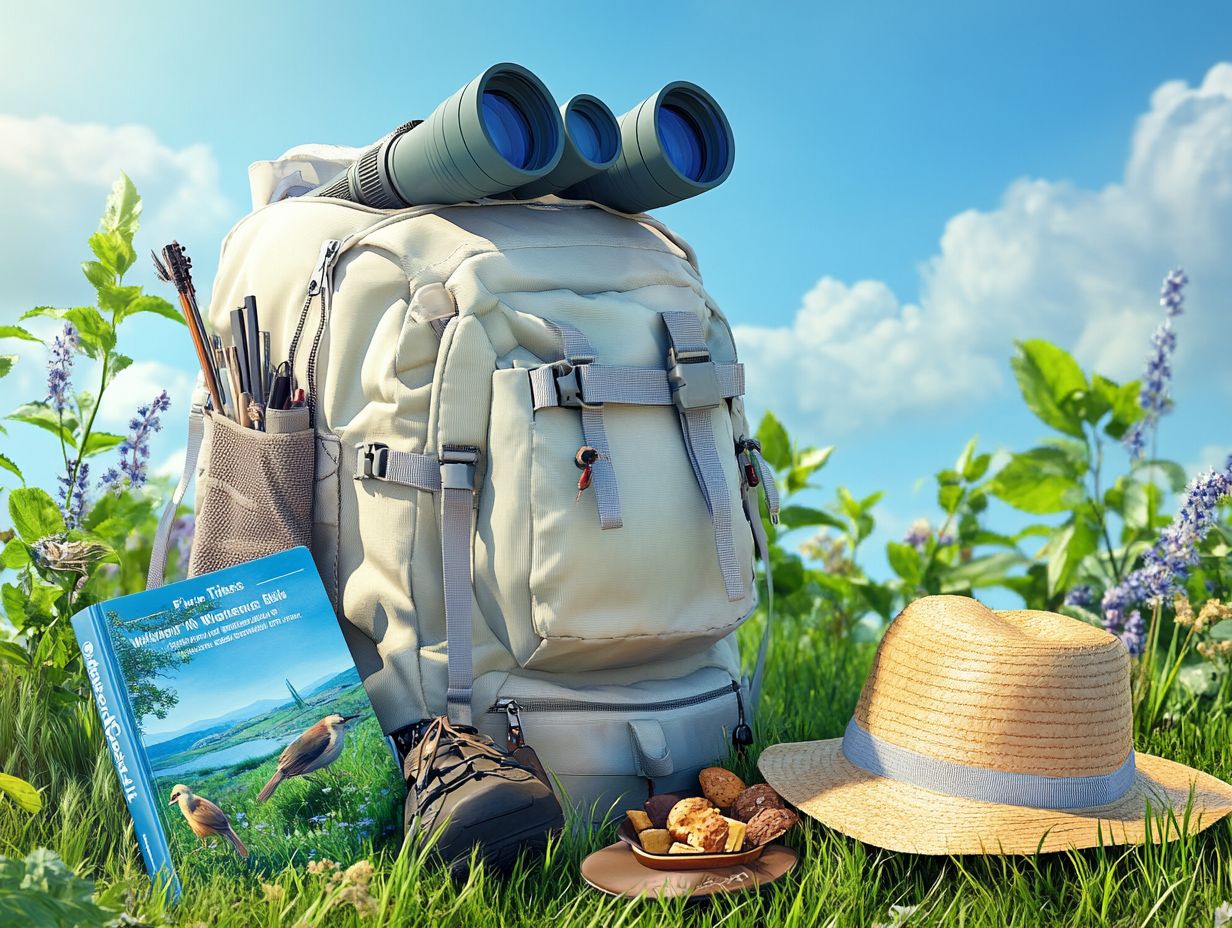
Choose clothing that balances comfort and functionality. This enhances your bird-watching experience.
Breathable fabrics like moisture-wicking polyester help regulate body temperature during long hours in the sun. UPF protection helps block harmful rays from the sun. Lightweight and quick-drying materials are smart choices, especially in wet conditions.
Functional pockets are invaluable, providing convenient spaces for your binoculars, field guides, or snacks. This ensures you’re ready when that rare bird appears. Opt for versatile clothing, like convertible pants that morph into shorts, to adapt to changing weather while maintaining comfort and practicality.
Preparing for Different Environments
Preparing for various environments is essential for your birding trip. Locations like Ontario’s Long Point or the shores of Lake Erie can have shifting conditions that greatly influence your experience.
Familiarizing yourself with local climates and potential wildlife sightings helps you create a tailored packing checklist for the area. Don t be caught off guard!
Engaging with local experts offers valuable insights, helping you anticipate challenges and optimally prepare your gear and clothing.
What to Pack for Different Types of Bird Watching
Packing the right items for your bird-watching adventures can dramatically influence your trip’s success. Be sure to check out this guide on how to prepare for a bird watching trip to ensure you’re fully equipped for diverse conditions and challenges.
For a casual outing, consider these essentials:
- A comfortable pair of binoculars to bring distant birds closer.
- A lightweight backpack for effortless carrying.
- A water bottle to stay hydrated as you immerse yourself in nature.
When the sky turns overcast, waterproof gear becomes essential for staying dry while enjoying the company of your feathered friends.
Heading on a thrilling expedition? You’ll need a comprehensive checklist:
- A reliable field guide is invaluable for identifying various species, especially when paired with bird call devices.
- Smartphone apps provide a treasure trove of information at your fingertips.
- Don t forget snacks to keep your energy up.
- A notebook for recording observations enriches your bird-watching experience.
Organizing Your Gear
Organizing your gear is crucial for a successful birding trip. Efficient packing minimizes stress and ensures you have the top 10 must-have items for bird watching trips, allowing you to immerse yourself fully in the experience.
A well-thought-out packing checklist including your camera gear, hiking boots, and a portable power bank ensures everything is right at your fingertips.
Compartmentalizing your gear into categories helps you easily access essentials like binoculars, bird call devices, and weatherproof notebooks during your excursions.
Tips for Efficient Packing and Carrying
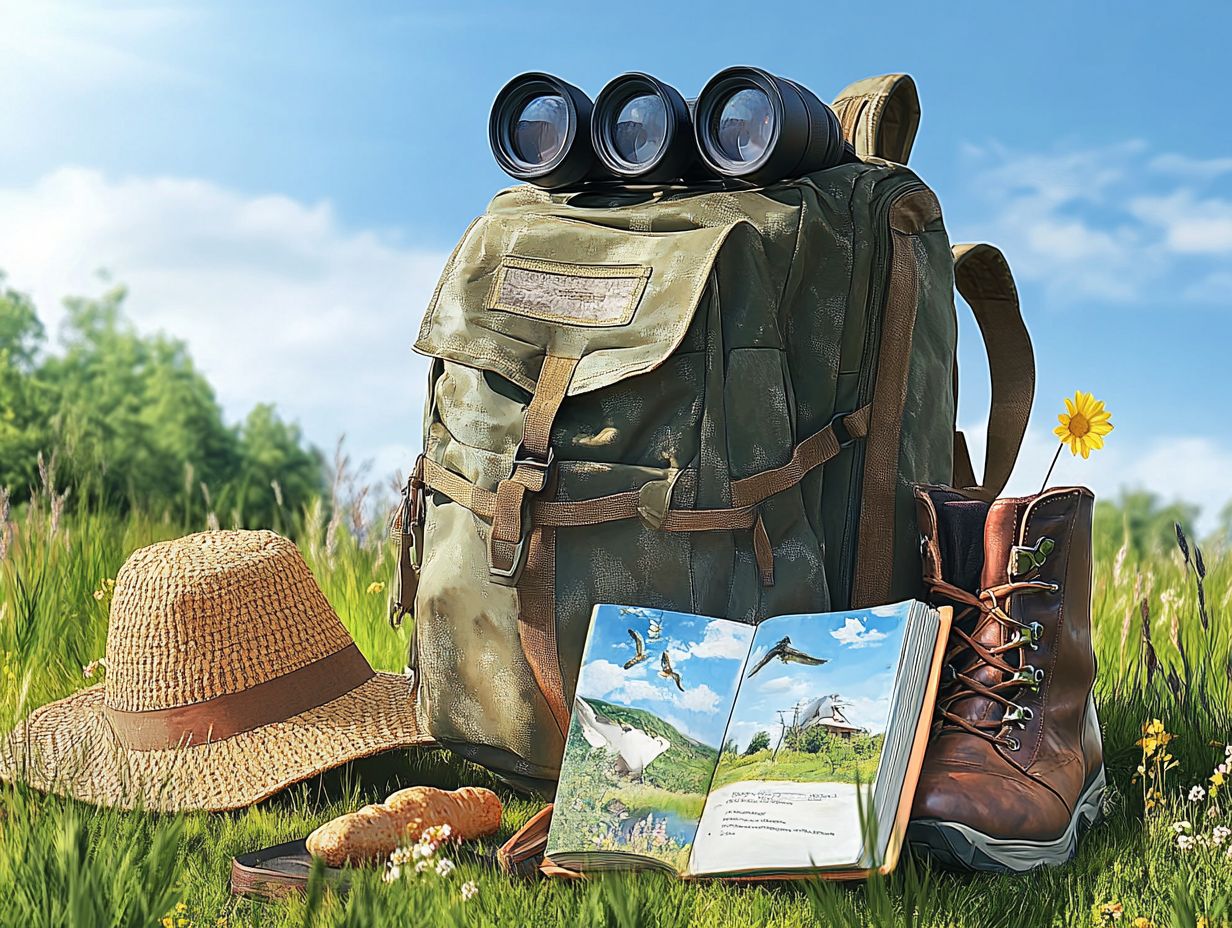
Efficient packing and carrying techniques can transform your birding trip into a seamless and enjoyable experience, allowing you to fully immerse yourself in the joy of birdwatching rather than struggling with disorganized gear. For more tips, check out this guide on how to plan a bird watching trip abroad.
By thoughtfully selecting lightweight binoculars and waterproof equipment, you can elevate your adventure even more. Balance your load to avoid fatigue during those long hours in the field; this is easily achieved by distributing weight evenly across your backpack.
Choosing the right backpack is paramount. One that fits comfortably and offers adequate support can make a world of difference. To enhance your experience, it’s important to understand what to look for in bird watching gear. Using compartments wisely ensures that your gear is readily accessible, minimizing the time spent rummaging through your equipment and maximizing your opportunities to observe the captivating avian species that await.
Additional Tips for a Successful Trip
To guarantee a successful birding trip, embrace additional considerations that include thorough research on species like Newegg or Beljarica, prioritizing safety, and practicing etiquette when engaging with local experts and their environments.
Research, Safety, and Etiquette
Researching your destination and understanding safety measures are essential components that elevate your birding experience and foster positive interactions within the birding community.
Learning about specific environments helps you spot birds more easily. Whether it s wetlands, forests, or coastal areas, you ll be better equipped to anticipate bird behavior and locate them with greater ease.
It’s equally vital to familiarize yourself with safety tips tailored to various settings, whether that means staying hydrated in sunny locales or choosing the right footwear for rugged terrains. Maintaining a respectful distance from wildlife enriches your experience and builds the friendships you create along the way, reminding everyone that birding is as much about the connections you build as it is about the birds themselves.
Frequently Asked Questions
What essentials do I need to pack for a bird watching trip?
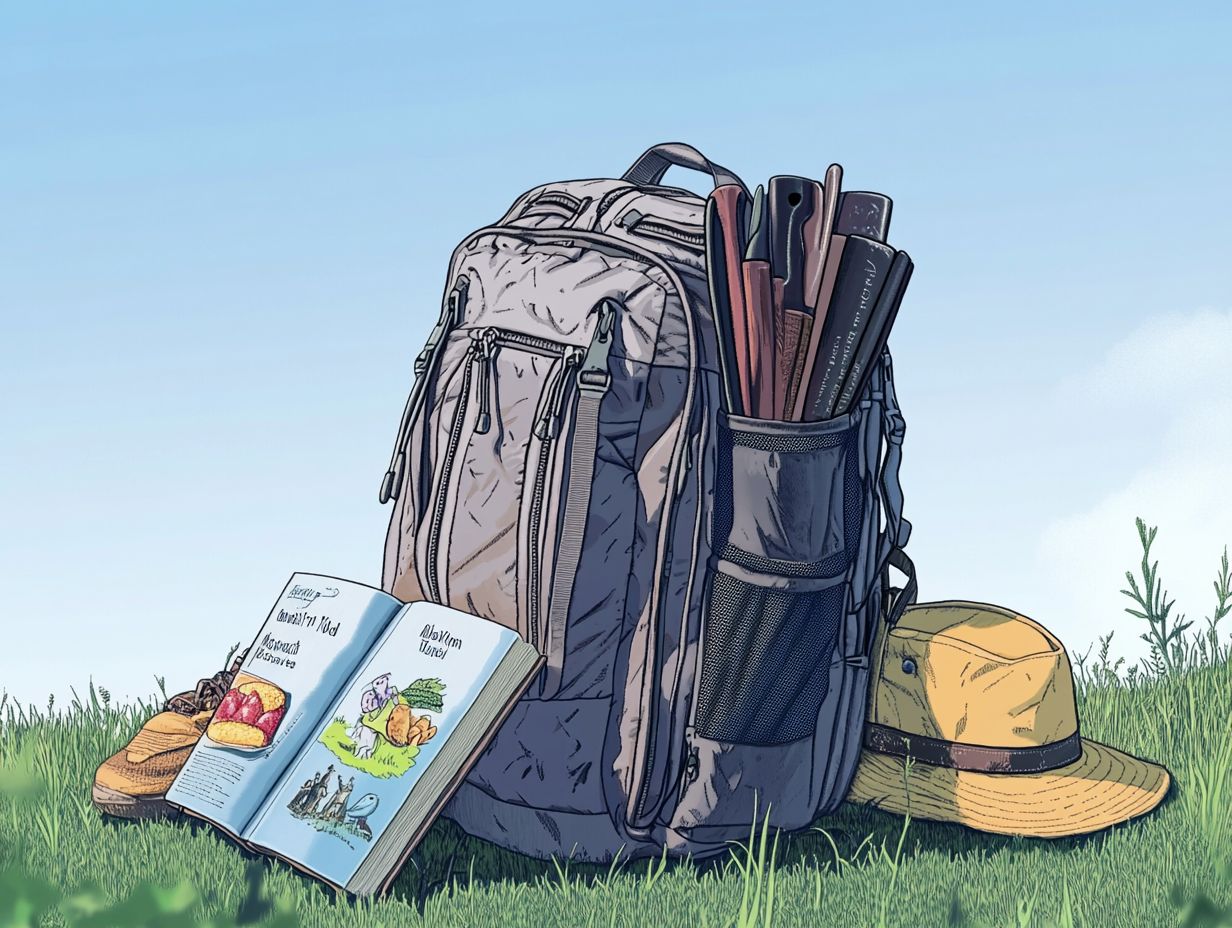
When preparing for a birding trip, make sure to pack lightweight binoculars, a field guide, a camera, a weatherproof notebook, a water bottle, sunscreen, and insect repellent. To ensure you have everything you need, refer to this guide on what to keep in your bird watching backpack. These items will help you spot and identify birds, stay hydrated, and protect yourself from the sun and bugs.
Do I need to pack specific clothing for a bird watching trip?
Wear quick-dry, neutral-colored clothes when bird watching. This helps you blend in with your surroundings and not disturb the birds. Additionally, consider investing in photography gear essentials for birdwatching to enhance your experience. Also, remember to bring hiking boots, a hat, and sturdy shoes for walking through different terrains.
How should I pack my binoculars for a bird watching trip?
To protect your camera gear and binoculars during travel, pack them in a padded case or wrap them in a soft cloth. Additionally, make sure to include a lens cleaning cloth to keep your binoculars in top condition for clear bird sightings. For those interested in more tips, check out this guide on how to prepare for bird watching in extreme weather.
Should I bring snacks on a bird watching trip?
It’s always a good idea to bring some snacks on a bird watching trip. Choose lightweight and non-crunchy snacks, such as energy bars or trail mix, to avoid disturbing the birds while snacking. Additionally, make sure you’re prepared by preparing for a bird photography outing and consider packing a portable power bank to keep your smartphone apps ready for bird identification.
Do I need to pack a first aid kit for a bird watching trip?
Bring a basic first aid kit to be prepared for accidents in nature. Essentials like bandages, pain relief medication, and a travel guide can come in handy.
What can I pack to attract birds during a trip?
To attract more birds on your trip, pack bird feeders, bird seed, and a device that mimics bird sounds. These items can help draw in a variety of birds.
For example, you might see the Grey-headed Albatross or Knysna Turaco. Get ready to draw in amazing bird species and capture stunning photos during your adventure!

